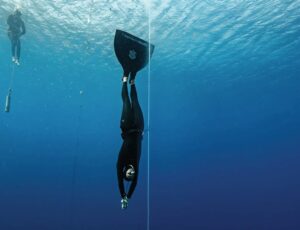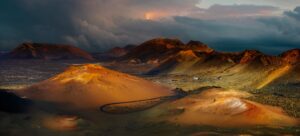The Seven Summits has become part of the adventure lexicon, shorthand for the highest mountain on each continent.
The most commonly accepted list is:
Mount Everest, Asia, 8,849m
Aconcagua, South America, 6,961m
Denali, North America, 6,194m
Kilimanjaro, Africa, 5,895m
Mount Elbrus, Europe, 5,642m
Mount Vinson, Antarctica, 4,892m
Puncak Jaya/Carstensz Pyramid, Oceania, 4,884m

The Seven Summits (and the “eighth summit”, Mount Kosciuszko). Photo: Shutterstock
Mountaineers have sought to climb the highest peak on each continent since at least 1956 when American William Hackett completed five of the seven. However, he climbed Mont Blanc rather than Mount Elbrus and Mount Kosciuszko rather than Puncak Jaya, as these were considered the highest peaks in Europe and Oceania respectively at the time. He also attempted Mount Vinson and applied for a permit to tackle Everest, though he never made it to the mountain.
Hackett’s list, with Mount Kosciuszko instead of Puncak Jaya and Mont Blanc rather than Mount Elbrus, introduces a long-running debate in the adventure community. What constitutes a continent? The divide between Europe and Asia is far from obvious. The ancient Greek geographer Herodotus named the Rioni River in modern-day Georgia as the dividing point.
The continental conundrum
Most modern geographers position the divide further north, from the Ural Mountains in Russia, running southward across the Black Sea toward Istanbul where the two continents mingle over the Bosphorus.

The Europe-Asia border. Ural Mountains, Russia. Photo: Shutterstock
This throws up some interesting quirks. Crete is European while neighboring Cyprus is in Asia. Georgia considers itself European but is usually considered to be in western Asia. The divide is a construct, “defined only by convention”.
Similarly, most people define Russia as a European state, and the consensus puts Mount Elbrus in Europe. Over 800m higher than Mont Blanc, Elbrus is therefore considered the highest point in Europe by the most mountaineers.
Mount Kosciuszko verses Puncak Jaya is trickier. The debate comes down to whether you are looking to climb the highest peak on the Australian mainland or the Australian continent. The Australian continent, or Oceania, includes New Guinea. The highest point on New Guinea is Puncak Jaya (also known as Carstensz Pyramid) at 4,884m, while Mount Kosciuszko, the highest point on mainland Australia, is 2,228m.

A sunrise view of Puncak Jaya in Indonesia. Photo: Shutterstock
Complications arise when you look at political boundaries. Puncak Jaya lies in Papua, Western New Guinea, and is part of Indonesia. Indonesia is in Asia. However, sticking with geographical rather than political boundaries puts Puncak Jaya on the same continental shelf as Australia. The debate hasn’t been categorically settled.
At least among mountaineers, Puncak Jaya has emerged as the consensus choice for Oceania. Canadian mountaineer Pat Morrow succinctly summed up the reasoning: “Being a climber first and a collector second, I felt strongly that Carstensz Pyramid, the highest mountain in Australasia … was a true mountaineer’s objective.”
Puncak Jaya is 2,656m higher and a proper climb, rather than a scenic four-hour walk from a car park.

The monument at the top of Mount Kosciuszko. Unlike Puncak Jaya, Mount Kosciuszko is a gentle walk to the summit. Photo: Shutterstock
The two Seven Summits lists
However, two Seven Summits lists have endured. The Bass list, named after American Dick Bass, includes Mount Kosciuszko, and the Messner list, named after Reinhold Messner, counts Puncak Jaya. Neither list opts for Mont Blanc over Mount Elbrus.
In 1985, using his own list, Dick Bass is the first person to have completed the Seven Summits. Pat Morrow completed the Puncak Jaya list — now known, somewhat unfairly, as the Messner list — the following year. He also climbed Mount Kosciuszko, becoming the first person to complete both lists.
Later the same year, Messner also completed both lists, becoming the fifth person to complete the Seven Summits. Most impressively, he was the first to do so without bottled oxygen. In 1992, Japanese mountaineer Junko Tabei became the first woman to do the Seven Summits. Previously, in 1975, Tabei was the first woman to summit Everest.
Since these early pioneers, the number of Seven Summit completions has ballooned. The website 7summits.com tracked completions up till 2016 when the total figure stood at 416.

Dick Bass on top of Everest. Photo: Dick Bass
More Seven Summiters than ever
Nowadays, a new wave of adventure tourists has led to criticism. Climbers have raced to be the fastest or youngest, jetting from one mountain to the next and using oxygen, fixed ropes, and expert guides. Some have suggested that a Seven Second Summits (climbing the second-highest peak on each continent) represents a greater mountaineering challenge.
Nevertheless, the Seven Summits are no walk in the park. In particular, Everest, Aconcagua, and Denali are all potentially dangerous peaks. More than 300 people have died on Everest; more than 100 on each of the other two.
The Seven Summits are also required for the Explorers Grand Slam, which challenges athletes to reach the North and South Poles as well. Each year, more tourists climb Everest and the other six peaks than ever before. Likewise, the popularity of the Seven Summits won’t wane any time soon.

Kilimanjaro, the highest peak in Africa, at twilight. Photo: Shutterstock





